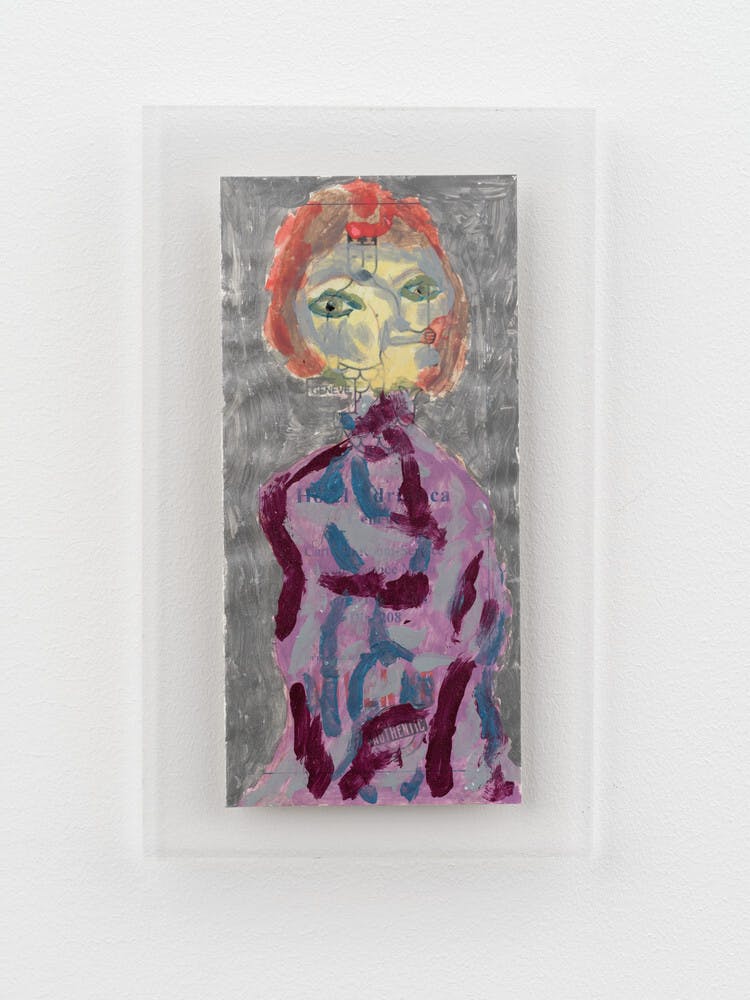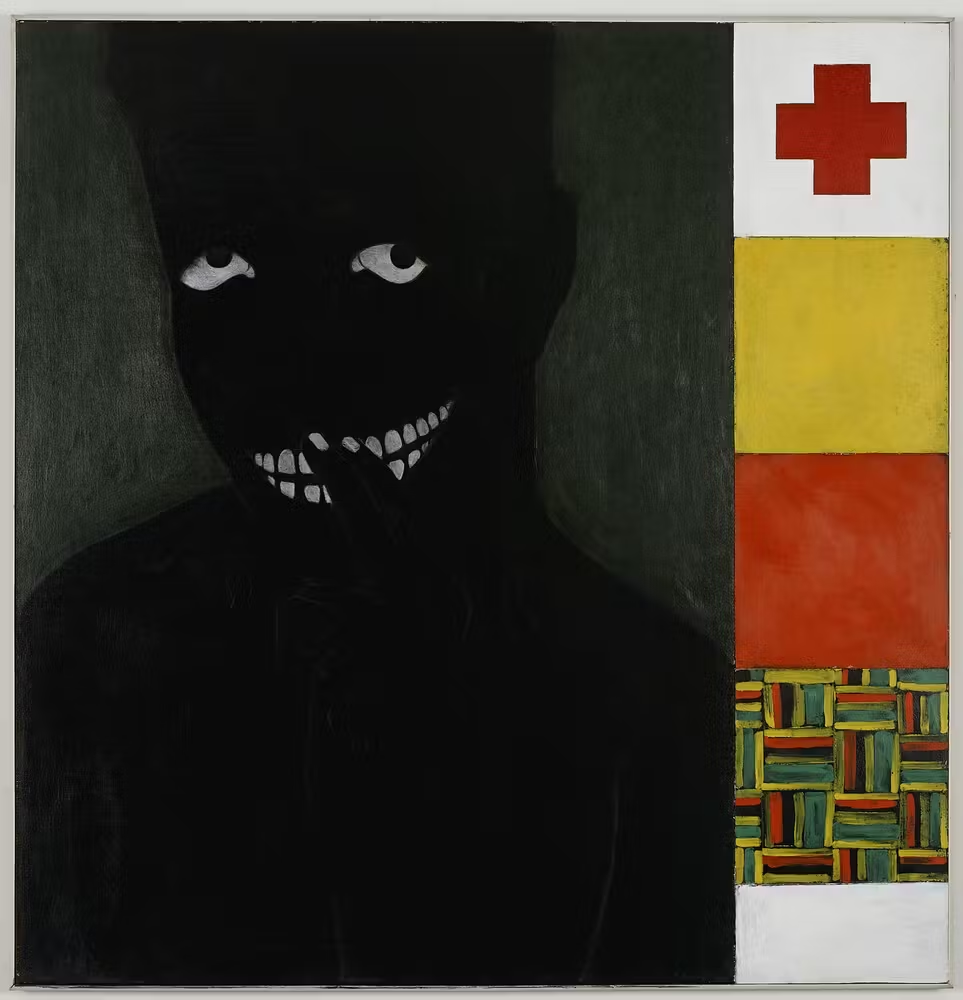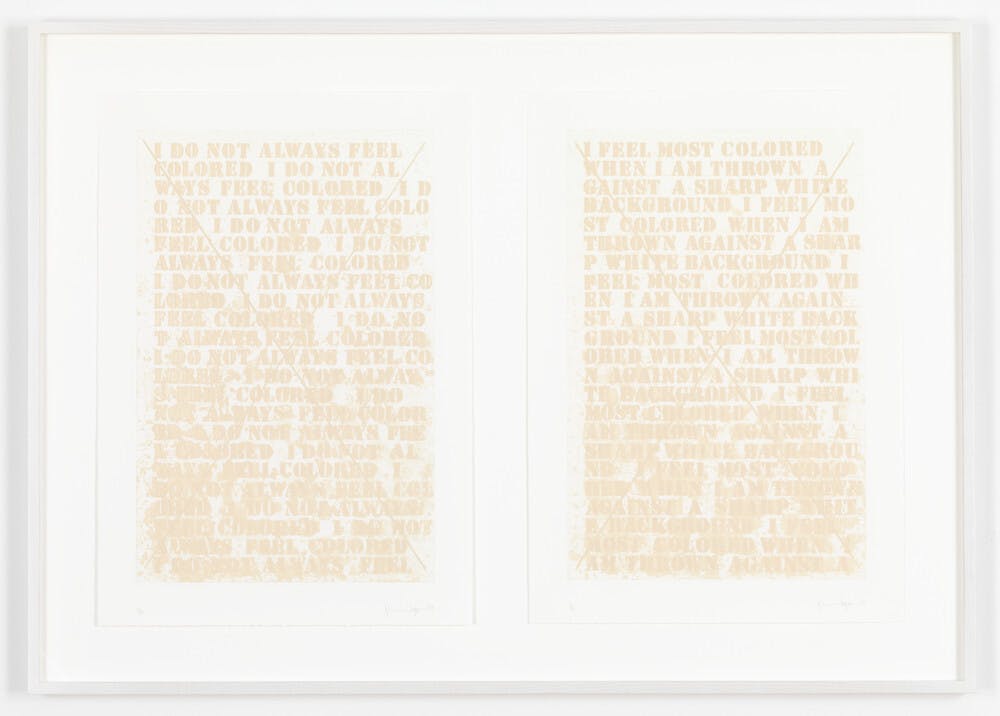Harlem Literature
From the voices of the Harlem Renaissance to the poetry of the Black Arts Movement, this Collection in Context demonstrates the inextricable link between the rich literary history of Harlem and the visual arts. While some of the artists in this grouping experiment with the appropriation of text or directly reference the literature and its writer, other artists allude to literary strategies. This reciprocal relationship between the visual artist and writer affirms the deeply seeded interdisciplinarity that has foregrounded the imagination of artists of African descent across time.
The intergenerational impact of Harlem as a locale for artistic movements such as the Harlem Renaissance and the Black Arts Movement, and as a site of sociopolitical and artistic exchange, is evident across these selected works from the Studio Museum’s permanent collection. Moreover, the cross-disciplinary dialogue between writers and visual artists has fostered a breadth of works that have expanded the possibilities of literature and visual arts more broadly.
Nella Larson (2020) references author Nella Larsen
Larsen's stories centered middle-class Black women facing colorism and class discrimination. Davis's inclusion of herbal ingredients in the work suggests a holistic remedy to Larsen's themes.
Silence is Golden is influenced by Ralph Ellison’s novel Invisible Man (1952)
Ellison’s protagonist travels from the deep South to Harlem, encountering scenarios wherein he confronts his “invisibility,” a metaphor for navigating the world as a Black individual. Similarly, Marshall contrasts black and white paint to explore the invisibility and visibility of blackness.
Text from Zora Neale Hurston repeats across the surface of this Glenn Ligon work
Hurston engaged with the performativity of racial categorization and language through the inclusion of Southern Black vernacular. After Ligon discovered that a print project had not been canceled by the printer, he recovered the prints and layered a "X" across the surface of the plate over Hurston's words.
Artists have also reimagined the lives of literary figures in their work
Isaac Julien’s work was taken from his performance Undressing Icons (Looking for Langston). Centering the Harlem Renaissance writer Langston Hughes, the film explores how Black artists and writers navigated their interiority at the time.
The intergenerational impact of Harlem as a locale for artistic movements such as the Harlem Renaissance and the Black Arts Movement, and as a site of sociopolitical and artistic exchange, is evident across these selected works from the Studio Museum’s permanent collection. Moreover, the cross-disciplinary dialogue between writers and visual artists has fostered a breadth of works that have expanded the possibilities of literature and visual arts more broadly.



